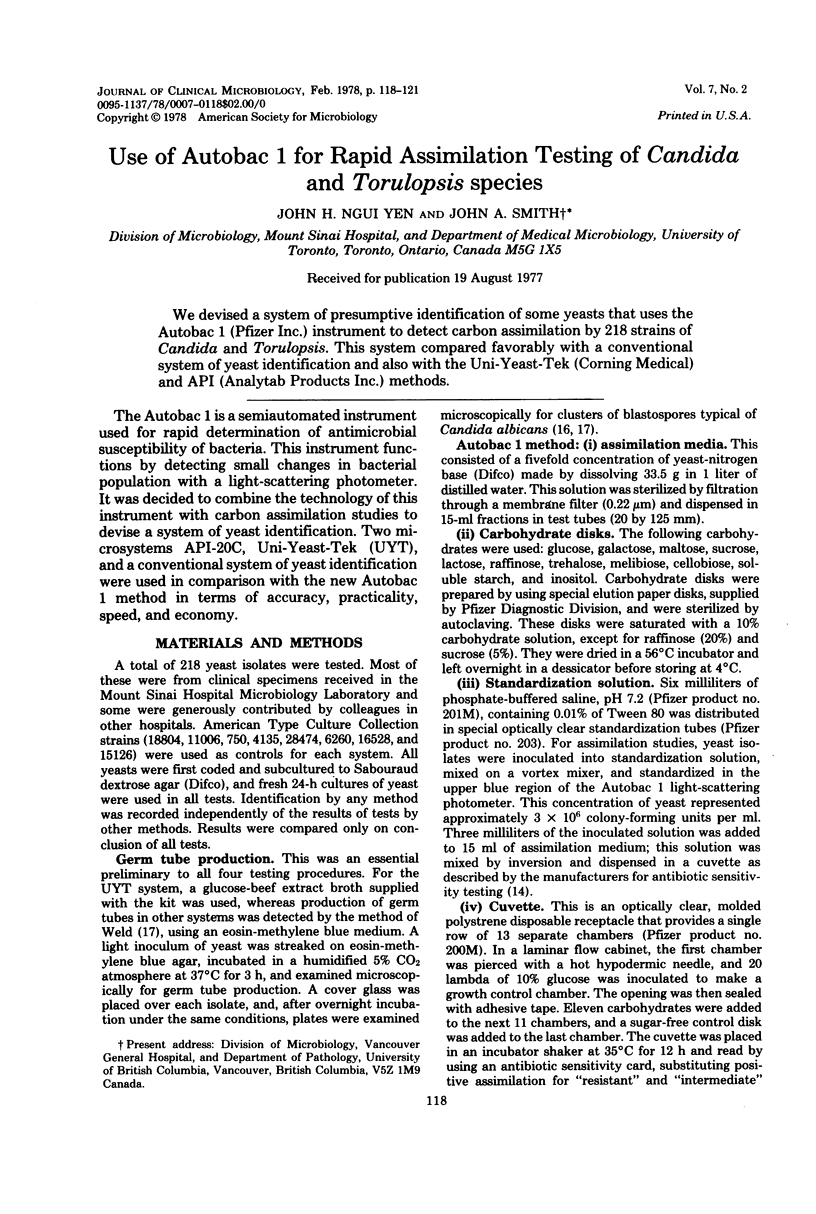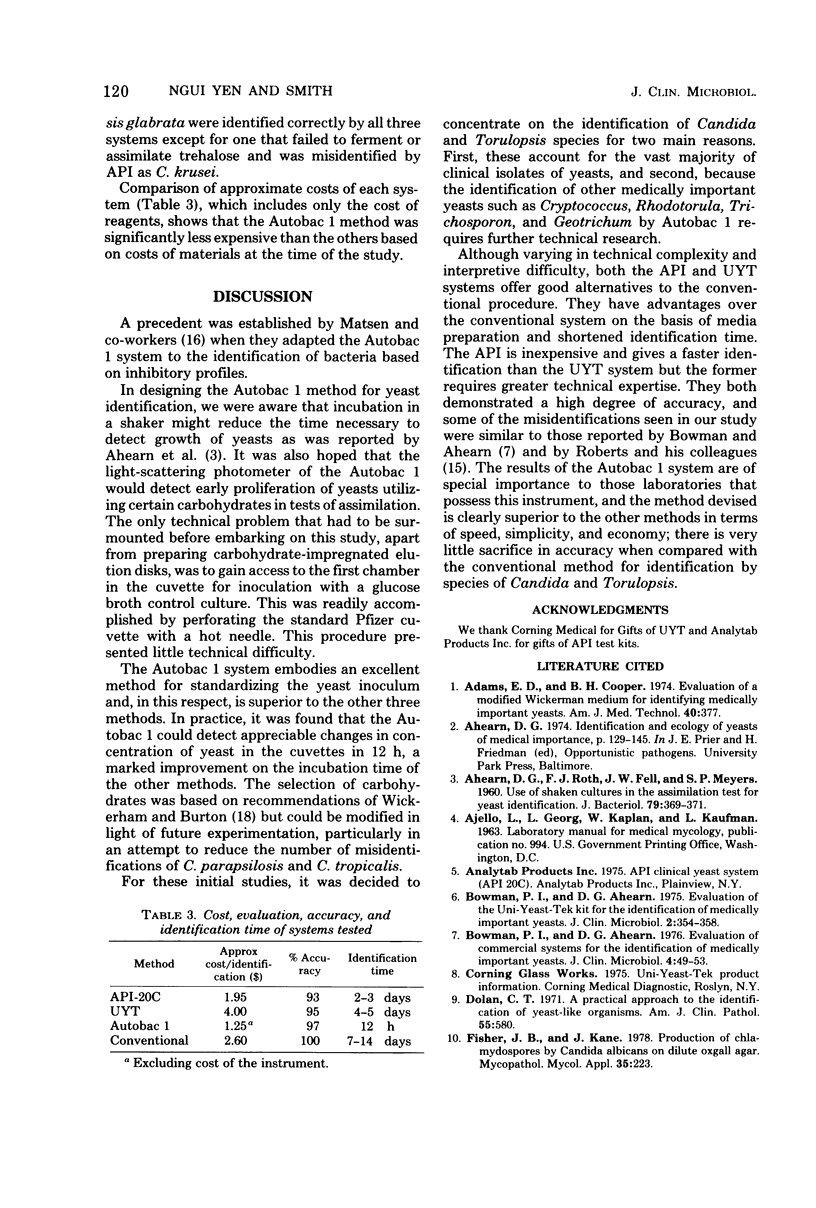Abstract
We devised a system of presumptive identification of some yeasts that uses the Autobac 1 (Pfizer Inc.) instrument to detect carbon assimilation by 218 strains of Candida and Torulopsis. This system compared favorably with a conventional system of yeast identification and also with the Uni-Yeast-Tek (Corning Medical) and API (Analytab Products Inc.) methods.
Full text
PDF



Selected References
These references are in PubMed. This may not be the complete list of references from this article.
- AHEARN D. G., ROTH F. J., Jr, FELL J. W., MEYERS S. P. Use of shaken cultures in the assimilation test for yeast identification. J Bacteriol. 1960 Mar;79:369–371. doi: 10.1128/jb.79.3.369-371.1960. [DOI] [PMC free article] [PubMed] [Google Scholar]
- Adams E. D., Jr, Cooper B. H. Evaluation of a modified Wickerham medium for identifying medically important yeasts. Am J Med Technol. 1974 Sep;40(9):377–388. [PubMed] [Google Scholar]
- Bowman P. I., Ahearn D. G. Evaluation of commercial systems for the identification of clinical yeast isolates. J Clin Microbiol. 1976 Jul;4(1):49–53. doi: 10.1128/jcm.4.1.49-53.1976. [DOI] [PMC free article] [PubMed] [Google Scholar]
- Bowman P. I., Ahearn D. G. Evaluation of the Uni-Yeast-Tek kit for the identification of medically important yeasts. J Clin Microbiol. 1975 Oct;2(4):354–358. doi: 10.1128/jcm.2.4.354-358.1975. [DOI] [PMC free article] [PubMed] [Google Scholar]
- Dolan C. T. A practical approach to identification of yeast-like organisms. Am J Clin Pathol. 1971 May;55(5):580–590. doi: 10.1093/ajcp/55.5.580. [DOI] [PubMed] [Google Scholar]
- Fischer J. B., Kane J. Production of chlamydospores by Candida albicans cultivated on dilute oxgall agar. Mycopathol Mycol Appl. 1968 Oct 14;35(3):223–232. doi: 10.1007/BF02050734. [DOI] [PubMed] [Google Scholar]
- Martin M. V., Schneidau J. D., Jr A simple and reliable assimilation test for the identification of candida species. Am J Clin Pathol. 1970 Jun;53(6):875–879. doi: 10.1093/ajcp/53.6.875. [DOI] [PubMed] [Google Scholar]
- Missett P. A. Identification of the yeast-like fungi. Can J Med Technol. 1972 Mar-Apr;34(2):63–79. [PubMed] [Google Scholar]
- Sielaff B. H., Johnson E. A., Matsen J. M. Computer-assisted bacterial identification utilizing antimicrobial susceptibility profiles generated by autobac 1. J Clin Microbiol. 1976 Feb;3(2):105–109. doi: 10.1128/jcm.3.2.105-109.1976. [DOI] [PMC free article] [PubMed] [Google Scholar]
- WELD J. T. Candida albicans; rapid identification in pure cultures with carbon dioxide on modified eosin-methylene blue medium. AMA Arch Derm Syphilol. 1952 Dec;66(6):691–694. doi: 10.1001/archderm.1952.01530310029003. [DOI] [PubMed] [Google Scholar]
- Wickerham L. J., Burton K. A. Carbon Assimilation Tests for the Classification of Yeasts. J Bacteriol. 1948 Sep;56(3):363–371. doi: 10.1128/jb.56.3.363-371.1948. [DOI] [PMC free article] [PubMed] [Google Scholar]


